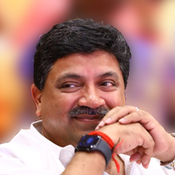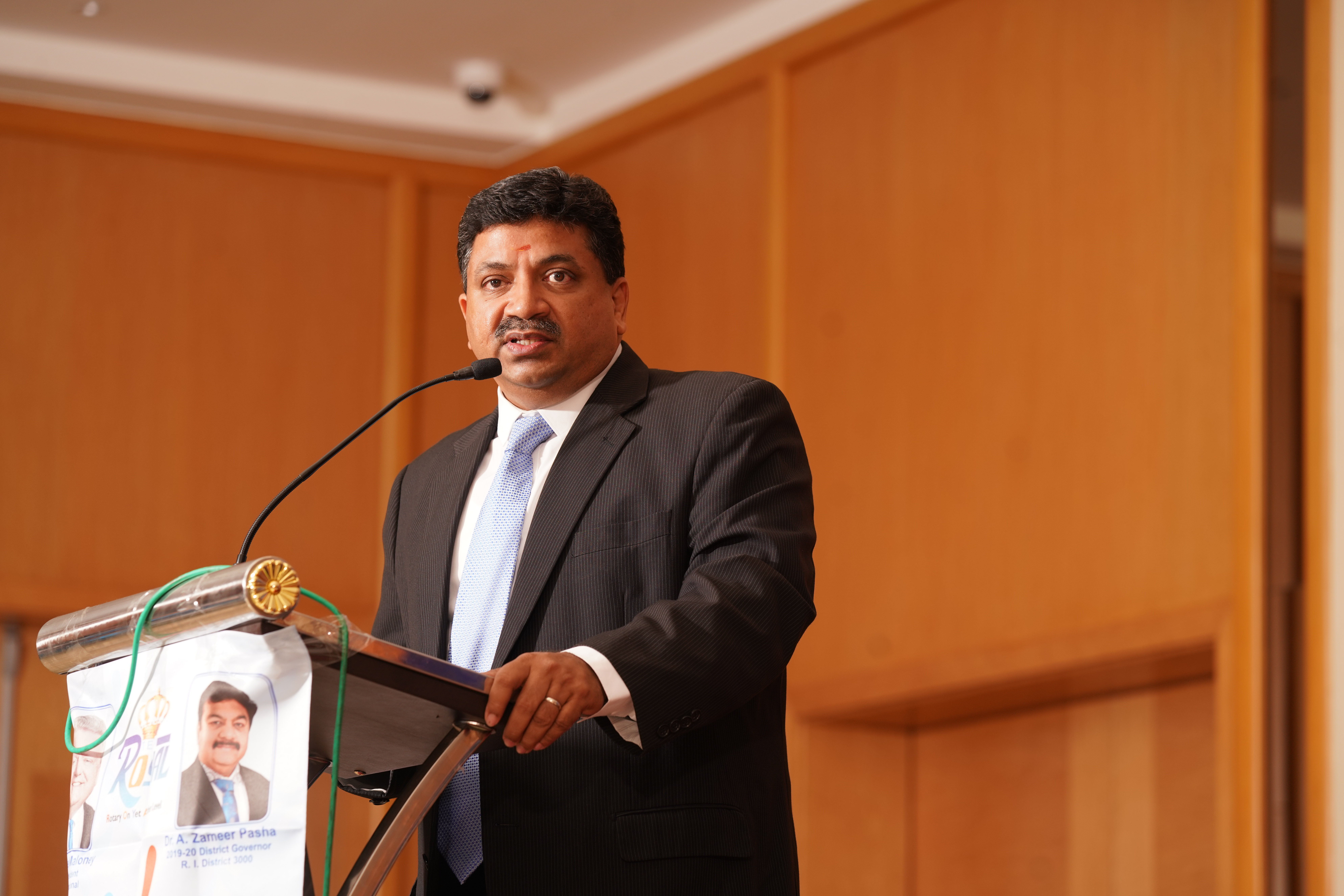


Published Date: March 21, 2021
Dravida Munnetra Kazhagam (DMK) president MK Stalin and All India Anna Dravida Munnetra Kazhagam’s (AIADMK) incumbent chief minister Edappadi K Palaniswami are leaving no stone unturned in their bid to seize power in Tamil Nadu, which goes to the polls on April 6. The Dravidian archrivals are sweating it out, both on the streets and online to connect with the voters.
Poet and politician Salma joined DMK in 2004. She recalls that over a decade ago, political parties were dependent on newspapers, ‘bit-notices’ and street corner meetings to connect with the people. Each party relied on their firebrand speakers and door-to-door campaigns. Now, with electioneering partly shifting to social media, information reaches quicker and to a large number of masses, she says.
Ramu Manivannan, Professor and Head of Department of Politics and Public Administration, University of Madras tells Bangalore Mirror that when it comes to social media, a large section of the tech-savvy generation is active digitally, but when it comes to digital electioneering, the leading fronts just try to cut into each other. “On social media, one political party would present a view while the other would counter it. It’s more about outrage rather than any substantial debate,” the professor said.
With merely about a fortnight left for D-Day, electioneering has touched a peak on social media. Covid-19 or not, the battle for political supremacy has partly shifted from the streets to the online sphere. The trend has been growing since 2016, says PTR Palanivel Thiagarajan, who heads the IT wing of the DMK, though he agrees there is no substitute for face-to-face meetings.
The IT wings of the DMK and AIADMK and their allies have their task cut out. The DMK’s campaign focuses on its poll promises, its principles, while exposing the alleged corruptions of the AIADMK. It also highlights opinion poll surveys that have predicted a DMK victory.
On the other hand, the AIADMK’s IT campaign highlights the ‘achievements’ of the government led by chief minister Palaniswami and his deputy O.Panneerselvam and reminds the voters about the scams the DMK was involved when it was part of the United Progressive Alliance (UPA) government at the Centre. For instance, the 2G scam. “Thodarattum Vetrinadai Endrendrum Erattailai” (Let the march of victory continue, forever Two Leaves), declares a post on the AIADMK’s IT wing site.
The third front comprising actor-turned-politician Kamal Haasan’s Makkal Needhi Maiam (MNM) and smaller outfits including Seeman’s Naam Tamilar Katchi are no pushovers when it comes to their presence and electioneering on social media.
Temperatures have been soaring in the state with tweets, memes, videos, WhatsApp messages, misinformation, lies, smear campaigns, hashtag campaigns and whatnot spreading thick and fast online.
The DMK and AIADMK’s electioneering is powered by their IT wings besides Prashant Kishor’s Indian Political Action Committee (I-PAC) and election strategist Sunil Kanugolu respectively.
It was in June last that AIADMK roped in Kanugolu, a former consultant with McKinsey for policy as well as poll consultation. He was a key member of Narendra Modi’s 2014 general election campaign. He was with the DMK during the 2016 assembly elections. Though the DMK lost, it was by a slender margin and Kanugolu was credited for Stalin’s “Namakku Naame” or ‘We for Ourselves’ campaign.
When Kanugolu quit the DMK after the Lok Sabha polls, the AIADMK rolled out a red-carpet for him. He now advises Palaniswami on policy matters.
The DMK signed in Prashant Kishor early last year to help shape its campaign. Kanugolu and Kishor have been colleagues, had in fact, co-founded Citizens for Accountable Governance, the precursor to I-PAC.
Not all leaders in both the parties are happy with “outsiders’ “ interference in party affairs. Sources also point out that the strategists are not familiar with the inner workings of the Tamil Nadu political parties.
Covid or not, most prominent politicians are also hitting the campaign trail to meet voters in person
But sources point out how the strategists have helped boost the image of leaders. For insance, poll strategist Jhon Aromiasamy reportedly helped boost the image of Paatali Makkal Katchi (PMK) leader and former union minister Anbumani Ramadoss during the run-up to the 2016 assembly elections with the tagline ‘Maatram, Munnetram, Anbumani’ (Change, Progress, Anbumani).
The DMK launched its IT wing in 2017 with Palanivel Thiagarajan as its head. Thiagarajan, son of PTR Palanivel Rajan, late DMK leader and assembly Speaker and grandson of PT Rajan, who was the chief minister of Madras Presidency, noted that his team is only three years old but he was able to scale up its operation and strengthen the internal network in a short span. The IT wing has 28,000 “announced office-bearers” across the state.
“The 2019 Lok Sabha polls was significant as it provided an opportunity to learn several things,” said the sitting MLA from Madurai Central Constituency. Thiagarajan did his BTech at National Institute of Technology, Tiruchirapalli, took his PhD from State University of New York, Buffalo, and MBA from MIT Sloan School of Management.
When asked about DMK IT wing’s presence (or absence) on Instagram, Thiagarajan said that initially his priority has been to build the internal communication infrastructure and bringing together the pro-Dravidian, pro-Social Justice enthusiasts and volunteers to take on the “saffron brigade”.
“By God’s grace, my planning has been proved right that within 10 days after covid-19 broke out, DMK became the first party in the history of the country to run everything on Zoom.”
He said party president Stalin held a meeting of party office-bearers. In September, the party general body meeting was held and treasurer and general secretary were elected electronically.
The AIADMK’s IT wing was launched on 23 March 2016. Jayalalithaa appointed Singai Ramachandran, an alumnus of IIM Ahmedabad, as the head of the IT wing. Presently, The AIADMK has five zones under its IT wing, namely Chennai, Coimbatore, Madurai, Trichy and Vellore. The teams were led by Aspire K Swaminathan, G Ramachandran, Raj Sathyan, Vinobalan and Janani Satishkumar respectively.
Meanwhile, Kakashi Hatake of Schumy Vanna Kaviyangal (SVK) Bodcast (Podcast), a team of rationalists, said that SVK (founded by one Haashiraamaa Senju) has disagreements with the DMK IT wing over its “dignified” approach on social media. He expressed concern that the BJP-AIADMK combine keeps resorting to smear campaigns and lies. They hit below the belt. A dignified approach won’t be an apt response, they say.
“We use expletives and dank memes. We pay the hate-mongers by the same coin,” he said. The names of SVK teams are from the fictional characters of an anime aeries.
But Thiagarajan does not agree. He asserts that there is no need for the DMK to go low-brow like the BJP and AIADMK. “Right from the beginning, I’ve taken the high road,” he said.
A political consultant Mahesh Kumar (name changed since he preferred anonymity) explained that the role of IT wings is to project the party to the people. The strategists mainly do the job of boosting the image of prominent leaders in each party.
Recalling the growth of IT wings and the background of social media gaining central stage in electoral politics, Kumar said that a few years after the launch of Facebook, by around the end of 2009 or the beginning of 2010, a huge wave against the Dravidian movement swept the social media. It was more an anti-DMK wave rather than being anti-AIADMK. “It was after the end of the civil war between the government forces and the Liberation Tigers of Tamil Eelam (LTTE) in Sri Lanka with the killing of LTTE leader Velupillai Prabhakaran on May 2019. The Tamil population in the state and across the globe were hurt and enraged by the massacre of a large number of Tamil civilians in the war. The atrocities meted out to Tamil women and children left a scar on the psyche of the Tamils. The people back home and abroad accused the DMK of being in power at the time and not doing enough to pressurise the Congress-led government at the Centre to stop the genocide. It was the time when a large number of pro-Tamil movements became active on social media to campaign against the DMK. This, added by the 2G scam (2009-’10) in which senior DMK leaders were arraigned, left the DMK in an unenviable situation. We can say that it was a time when social media users almost feared to openly reveal their loyality towards the DMK,” Kumar says.
The DMK had to wait for nearly five years to recover from the setbacks. During that period, the AIADMK reigned supreme on social media. By 2016, the DMK recovered and even continued to defend itself and counter-attack in 2016. The favourable verdict in the 2G scam on December 2017, came as a shot in the arm. A few months earlier the party launched its IT wing.
Between 2016 and 2019, the party intensified its “hashtag campaigns”. The campaigns focussed on defending the Dravidian ideology with the aim of gaining the support of all those who believed in Dravidian ideology for the DMK, Kumar says.
Death of the stalwarts
After the death of Jayalalithaa (5 December 2016) and Karunanidhi (7 August 2018) both the parties chose to build a narrative through social media. The race to outsmart each other and boost the image of their leaders using the IT wings has lately reached a crescendo.
The pro-Dalit, Viduthalai Chiruthaigal Katchi (VCK), led by its founder Thol.Thirumavalavan is a key ally of the DMK-led front in Tamil Nadu. At the national level, VCK prides itself on being the first political party to launch a social media wing. VCK had a website for the party way back in 2002, though it largely served only the party followers and played limited role in electoral politics till the recent times.
Sajan Baraj, who assumed charge as the state secretary and social media head of VCK in 2016, recalls that Gmail was launched in 2004, which was followed by social networking service Orkut and then by Facebook, Twitter and so on. But leader Thirumavalavan had the vision to start a website for the party ahead of all the other political parties in the country, he says.
Recently, the DMK IT wing launched DMKITWING- WOMEN’S NETWORK to connect with women voters on social media.
Party president Stalin gave consent to constitute the separate network for women comprising only women members from the district to the grassroots level since women play a decisive role in the outcome of elections. Moreover, the state has more women voters when compared to men.
As against the 3,08,38,473 men voters, there are 3,18,727 female voters, says Thiagarajan. The party has also decided to constitute a women HRD team and invited application from aspirants last month.
Baraj points out that unlike the DMK and AIADMK, there is no salaried staff in VCK’s IT wing. But it packs a punch in its campaigns. It was evident when the team in October last destroyed a misinformation campaign launched against Thirumavalavan by the BJP’s IT wing.
The BJP released a video footage of Thirumavalavan’s speech made during a zoom meeting held under the aegis of the Dravidar Kazhagam to propagate that Thirumavalavan is against Hindu women.
“The duration of our leader’s speech was 40 minutes. The BJP released an edited version of the speech running to 59 seconds to circulate a lie that Thirumavalavan referred to Hindu women as ‘prostitutes’. We countered that by releasing a 6-minute video clipping to prove that Thirumavalavan was only quoting what was mentioned in the Manusmriti,” Baraj says.
The ban Manusmriti campaign launched by the VCK subsequently received resounding reception, Sajan notes.
Source: Bangalore Mirror